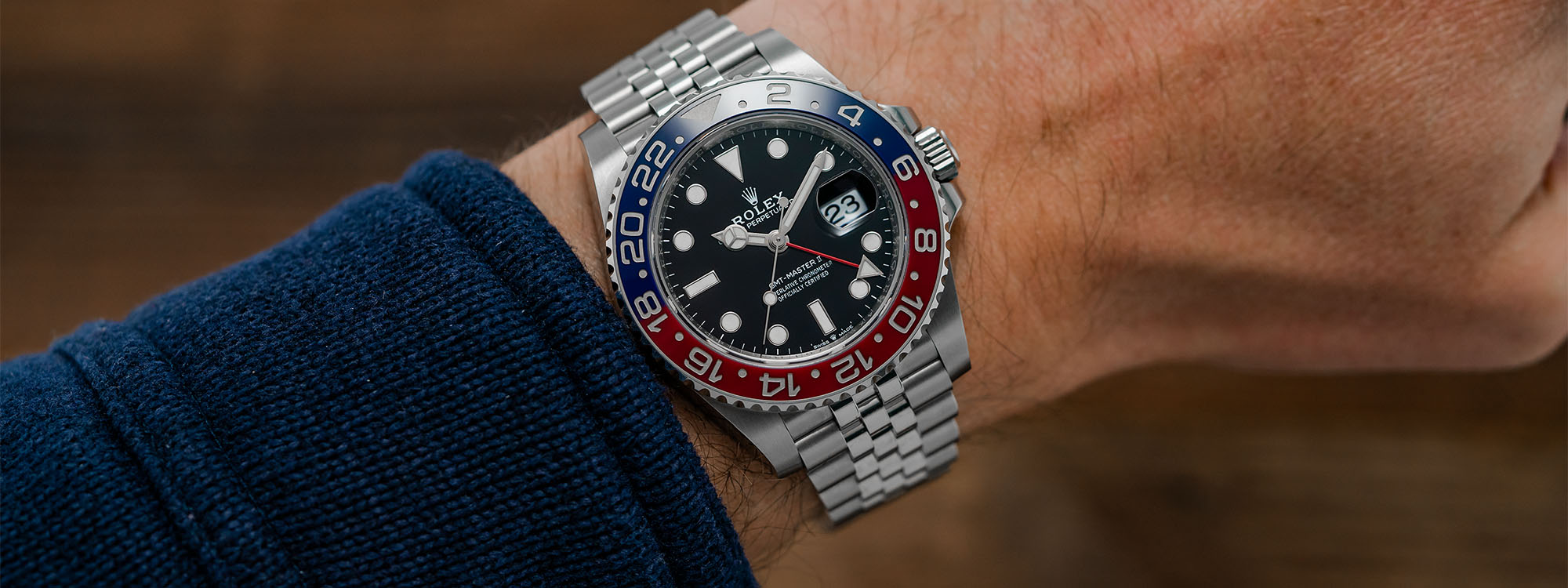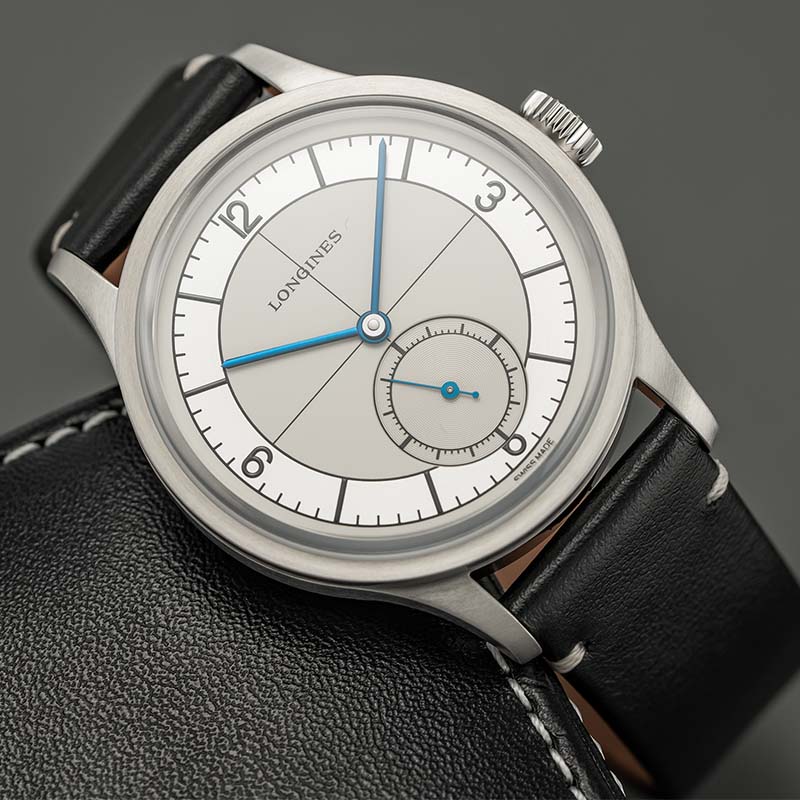As you start to read this article, let’s first see how much time it takes. Start by checking the time on your watch. Now stop and note which of your wrists you just raised to read the watch’s dial. For the vast majority of us, it’s the left wrist, right (er… correct)? Did you ever wonder how wearing a watch on one’s left arm became the norm? Let us briefly trace the evolution of portable timekeeping to arrive at the explanation.
Wristwatches, of course, were not the first means by which individuals carried the time around with them. As I explore more extensively in this article, the first watches were essentially miniature clocks worn on a chain around the neck. These somewhat unwieldy timekeepers gave way to pocket watches, which were smaller, more streamlined, and could be worn stylishly inside the pocket of a waistcoat. When one wanted to check the time (as below), one simply reached for his watch inside one of these pockets to consult it, and then stash it again until it was needed.

Utilitarianism and practicality, however, have always been at the core of watchmaking, and the pocket watch ultimately proved to be too impractical for the needs of an evolving 20th-century society. Women started wearing timepieces as bangles on their bracelets as early as the 1800s, but it wasn’t until the 1900s that the utility of a wrist-worn watch became apparent to the male population at large, which had long considered such a device feminine. It started with Louis Cartier’s invention of a wristwatch that his friend Alberto Santos-Dumont could wear while steering a balloon, and continued with the issuing of wristwatches to Allied troops in World War I (whom no one would accuse of being too ladylike). What these male-targeted wristwatches, and those that followed them, had in common was that they freed up both hands for whatever urgent task was at hand while the wearer checked the time. For the former, it was using both hands to operate a flying machine; for the latter, it was loading a weapon while timing the intervals of incoming artillery fire. In the wake of the First World War, the wristwatches that had served soldiers so well on the battlefield finally became the go-to style of timepiece for gentlemen in civilian life as well. It turns out that most gents appreciated the ease of tilting their wrists to glance at the time rather than fish for a pocket watch in a waistcoat (which was soon to be out of style in any case).

It was in the service of practicality that most early wearers of wristwatches wore them on their non-dominant hand — i.e., the hand that you don’t write with, aka the one that is slightly weaker and less dexterous. For most of the human population — anywhere from 85 to 90 percent, according to studies — this hand is the left hand. Wearing the watch on the non-dominant hand simply makes keeping track of the time while performing the duties of everyday life much easier. Imagine, for example, trying to write, sketch, or paint with the same hand on which you’re regularly checking the time. Or checking the time on the wrist of the same hand you’re holding a drink in, which could lead to plenty of absent-minded spills. For that matter, try to envision winding or setting your watch with your less dexterous, non-dominant hand. Wearing the watch on the left hand thus makes the most sense to most watch wearers.

Any southpaws reading this may be wondering at this point if they’re doing something wrong or socially unacceptable. Far from it. While left-handers make up only around 10 percent of the population, their left hand is the dominant one, which makes wearing the watch on their right hand the sensible and practical option. And while most watches are designed with right-handers in mind — i.e, the crown is on the right side of the case, occasionally along with other features like chronograph pushers — there are, in fact, a handful of watch manufacturers that cater to the needs of the left-hand-dominant minority.

For example, Tudor’s Pelagos LHD (above) is based on a diver’s watch the company made for southpaw military divers in the French Navy that had been wearing their government-issue dive watches upside down to more easily access the winding crown (hence the modern watch’s initials “LHD” for “Left Handed Drive.” Another Swiss watchmaker with a history of supplying military divers, Panerai, started offering a left-handed version of its flagship Luminor model — with both the crown and its patented locking bridge device shifted to the left side of the case — since 1940, and has revived it for modern consumers in recent years, including in a chronograph version with an eight-day power reserve.

IWC, famed as a purveyor of watches for aviators, introduced the “Right Hander” version of its Big Pilot’s Watch (above) in 2019. Based on a model from the 1940s, the watch’s massive 46mm case is designed to be worn on the right wrist, with its hallmark diamond-shaped crown poised on the left side. (Apparently, statistics show that even though left-handed people make up only about 10 percent of the general populace, they represent almost 40 percent of pilots. If so, it’s a bit surprising that even more left-hander pilot watches haven’t emerged.) Even the biggest name in luxury sports watches, mighty Rolex, introduced a version of its mega-popular travel watch, the GMT-Master II, for left-handed wearers at Watches & Wonders 2022. The watch (below) represented not only a milestone for legions of lefty Rolex fans but also an attention-grabbing new colorway, featuring a green-and-black bicolor Cerachrom bezel to accompany the modified movement with left-mounted crown and winding stem.

Okay, if you're still with me, now you can check your watch again to see how long it took to read this article. If you're raising your left arm, now you know why. If you're raising your right arm, congratulations; you just might be pilot material.






















































5 Comments
Early wristwatches were not always robust. Incabloc and other shock systems didn’t appear until the late 20s early 30s. It stands to reason that the less dominant hand would have less movement and less chance for malady, and the jewelers who sold the watches might have so advised their clients.
Lefty here and always wear my omega on my right hand. Fitbit on left.
I’m a righty, but I wear mine on my right hand inside my wrist. I started as a kid because my hero at the time wore his on his right, much later I found out he as left handed. As for wearing it on the inside, after breaking a couple of crystals, I moved it inside and problem solved. Now it feels weird to try to use my left hand for a watch. My hero? Sir Stirling Moss.
It all came down to dexterity for this lefty. As a child manipulating a watch strap with my left hand was the easiest, and as an adult I can honestly say I have never had a crown dig into the back of my right hand. I am now so used to working a crown with my right hand that I chose a right side crown Panerai over a left side crown model because it feels more natural to operate.
Left hand watch wearer here. I know why I wear it on my left hand, the reason is in this article, but it still looks odd seeing someone look to their right hand for the time. I wonder if there are any collectors out there of left hand wind watches? I bet they have some interesting pieces in their collection.